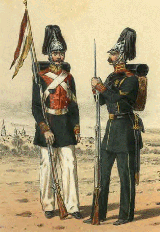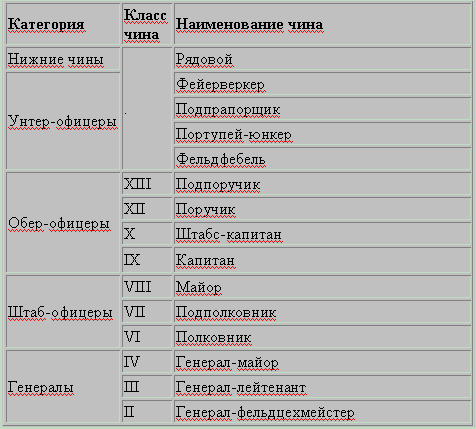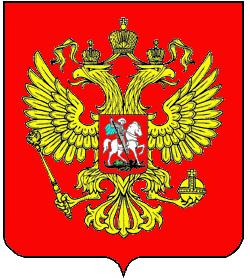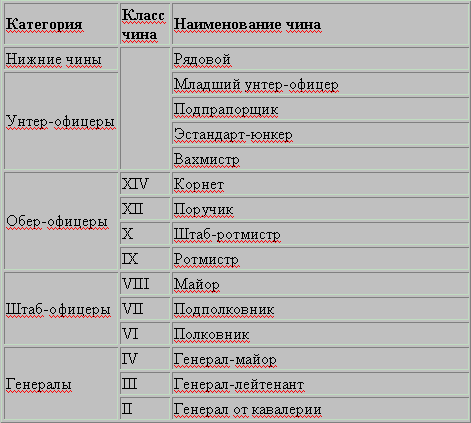
In the Russian Army of the Napoleonic era the slightly modified „Peter’s table“ (developed by Peter the Great in the beginning of 18th century) was still used. Following is information concerning the table approved by Alexander I in years 1800-1826, which remained valid – almost unchanged – up to 1917. The origin of this rank-table (and many of the rank names) could be found in the Prussian army, but some differences and names of Russian origin could be found even there.
1. In Guard units the ranks of the same name were considered to be two ranks higher than
those of „standard units“. However, when in April 1813 the Pavlov Grenadier Regiment joined the Guard
it was decided that officers of such „young guard“ units will be considered to be „one rank higher“ only.
2. Cossack units should oficially use the table valid for regular cavalry, but they frequently kept their
original rank-names.
3. In many sources we could find the rank name of „leytenant“ to be used. But, in Pavel’s/Alexander’s
era this rank was used exclusively in the navy, with the army using „poruchik“ instead. In the case of general
ranks (general-leytenant/general-poruchik) the situation is not so clear, but the most reliable sources strictly
mention the „general-leytenant“ rank name in Alexander’s era only.
4. From 1802 all NCOs of noble origin were called „yunker“.
5. In pioneer units the „NCO“ category has the name of „konduktora“.
6. From 1811 the rank of „mayor“ (VIII. class) was not used in the artillery/pioneer table and rank of „praporschik“
(XIV. class) was added.
7. „Shtabs-rotmistr“ and „shtabs-kapitan“ were - unlike in other armies - LOWER ranks than „rotmistr“ and „kapitan“
in the Russian Army, not HIGHER.
8. The „yunker“ ranks were sometimes divided into „portupey-yunker“ („portupey“ from french/german
„portopee“ = wrist strip of personal weapon; they were considered to be slightly higher rank) and „shtik-yunker“
(„shtik“ = bayonet; these were equipped by a musket and bayonet and were considered to be slightly lower in rank).

In the following 3 tables you will find ranks used in russian infantry („Army infantry“), cavalry („Army cavalry/Cossacks“) and artillery/pioneer („Army artillery/pioneer units“) units, whose ranks were slightly different for historical reasons. In the first column you can find a „rank category“, in the second there is a „rank class“ (Peter the Great developed it to allow a simple comparison of civil and military ranks, to decide „who should open a door to whom“, and to build-up a basic scheme for amount of salary received). The third column then bears the name of the specific rank.
The rank categories were:
- nizhnie chiny („lowest ranks“ = no rank)
- unter-oficery („lower-officers“ = NCOs)
- ober-oficery („higher-officers“ = officers)
- shtabs-oficery („staff officers“ but it has nothing to do with assignment to a staff, they just are
„officers of higher rank“)
- generaly („generals“)

The rank classes were numbered from I (highest) to XIV (lowest), with classes V and XI remaining unused. Above these classes there were also special ranks of members of Imperial family, but these are not important for this case.
The translation of rank names are:
(only the ranks not already mentioned in Infantry section are listed here)
(again only ranks not already mentioned are listed)


